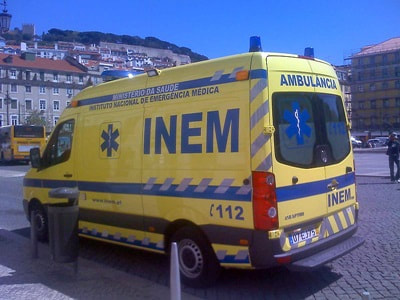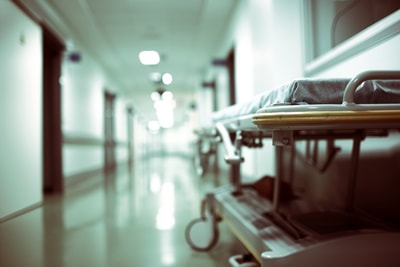|
Hi! Harold here. A recent personal experience has led to this blog post and it’s all about Portugal’s healthcare system. Let’s face it, there’s no better way to learn about something than doing it yourself. Let’s dig in… Eventually you may need to visit one of Portugal’s public or private hospitals and such was the case for me this last June. Unlike in the US, Portugal has a national health service (Serviço Nacional de Saúde, SNS) and both Portuguese citizens and residents are entitled to those services for little or no cost. This includes people who are temporary residents like us. From what we can tell, currently SNS is only available in Continental Portugal. There also exists a private healthcare system, that while subsidized by the government, receives their primary support from monies paid by their patients, personally, or via health insurance. This system was developed to provide a buffer for the private system so that patients with additional means may access healthcare on a paid basis, reducing the number of patients using the public system. Since the cost of health insurance is reasonable, the plan works. Healthcare in Portugal, either public or private, is vast, modern, and highly rated. The primary difference between public and private care is the time necessary to access services. The public system is the primary source of healthcare for most of the country’s residents, and it can get bogged down by the sheer number of people accessing those services. But that doesn’t mean that care is substandard. How does Portuguese healthcare rate? According to the CIA’s World Factbook, which has a wealth of details on every country, Portugal’s 2016 healthcare expenditures were 9% (in relation to the size of its economy). The U.S.’s was 16.8%. Portugal has a few more doctors in service (3.34 per 1K population) as compared to the States at 2.59. They also have a few more hospital beds (3.4 beds/1K vs. 2.9). A notable, and distressing difference is found in maternal death rates: 10 per 100K live births vs. 14 stateside. Even more striking is a markedly lower infant mortality at 2.6/1K live births which is less than half the U.S.’s 5.7/ 1K live births. Wow. As a third-party national, I am required to have a Temporary Residence Permit to live in Portugal and one of the stipulations for a U.S. citizen obtaining a residence permit is to maintain a Portuguese private health insurance plan so that I may access care in the private system. As a resident, I am still able to utilize the public health system, but would normally choose private care because of my insurance coverage, and to cut down on the time needed to receive care. Of course life doesn’t always work out exactly as planned, and the remainder of this blog reports my experience within the public system. Late one Friday evening just before retiring, I started to feel very unwell. While I was walking to the kitchen for a bowl (I did say I was feeling unwell) I fainted and dropped to the floor like a sack of bricks. Jana heard the commotion and came to my aid, finding me on the floor with a cut on the back of my head and unable to get up due to dizziness. And I definitely still needed that bowl. (Luckily Jana used to be a registered nurse so she didn’t freak out.) After she called our health insurer’s assistance line and spoke with a nurse (we have Médis) and it was decided that I should go to the hospital. Jana then called 1-1-2, the countrywide emergency number, and described the situation and an ambulance was dispatched after some haggling over how to spell the name of our street. Sadly the dispatcher said the ambulance was not equipped with GPS so that made matters a bit more difficult as there are two buildings with the same number on our street. A short time later, the ambulance arrived and the EMTs did their initial exam (vitals, took my personal info and such), then loaded me in the INEM (Instituto Nacional de Emergência Médica) ambulance. Jana was allowed to travel with me to the hospital. Not surprisingly, during times like this you aren’t really thinking straight and we both assumed we’d go to one of the private hospitals close to our apartment. Nope, I was being taken to Hospital Santo Antonio, Porto’s big public hospital, which has been in business since 1824. We are both very familiar with this institution since we previously lived only a couple of blocks from there. Later, I learned from Jana that since we had used the 1-1-2 emergency number, and were being transported by INEM, they would *only* take me to a public hospital. As the EMTs accompanied me to the Emergency Room, I glanced up at a board that kept track of how patients were seeking treatment. If I read it correctly, there were 35 people ahead of me in the non-critical queue. I was wheeled through a reception area where Jana gave my details to the clerk. These included showing them my Residence Permit, Médis health insurance card and my Número de Utente, my Portuguese national healthcare number. The clerk handed the health insurance card back saying she didn’t need it, and then took some information from the residence permit and recorded my Número de Utente. She printed out a fancy wristband for me with my personal information and Jana was given a wristband to designate her as a visitor. I was then transferred to a gurney which would be my home for many, many hours. After a bit of a wait, I was examined by a physician and I let him know what had happened: I’d fainted, fell, hit the back of my head, and was still dizzy and would get nauseous if I moved. He recorded all the information, treated a small wound on the back of my head, drew some blood, and rolled me into a waiting area. After a few hours, and an EKG, we began to grow concerned because I was still in the Emergency Room, under observation. In the U.S. that could be very costly. What about here? It was difficult to get any details as to what the next step would be. At first we thought it was just a language barrier but in hindsight it wasn’t that. It is just the pace of public healthcare. After a couple of shift changes and Jana being chased out of the hospital because visiting hours were over, I was still on a gurney under Observation, waiting to be seen by another doctor once the lab results were available. Bright and early the next morning I spoke with a neurologist about my condition and she set me up to have a CT scan. After many more hours, and with the test completed, more waiting ensued. This is not to say the care was lacking. When I was talking to a physician there was no rush, as if I was the most important person in that hospital. Every question was answered fully and the docs we encountered all spoke English quite well. Yet more tests as more time passed. In all, I was on that gurney for 2-1/2 days because unless you are severely ill they will not admit you. (This is often the case in the U.S. as well.) At first, I was placed in a room with ten patients, then moved to a smaller one with three others. At all times I was in sight of the seemingly endless number of nurses and techs who were hustling around caring for the other patients. The doc’s main concern was what caused me to faint, so she was methodically ruling out potential causes one by one. Mind you, I was still dizzy and couldn’t move without vomiting, but they were not just treating the symptoms, but the whole patient. Of course, I was more concerned with the vertigo and nausea, but their approach was very sound. The neurologist wanted to specifically rule out transient ischemic attacks (TIAs) which are a form of a stroke. So she scheduled me for an MRI. How they managed to get a team together to do the test on a Sunday I have no clue, but soon I was wheeled to the other side of the hospital, Jana in tow. I then had the joy of being positioned inside this giant machine, fitted with sound-deadening headphones while being pulled through this contraption that sounded like one continuous slow-motion car crash. Certainly a new experience for me. After several more hours, the neurologist stops by and delivers the verdict: The CT scan and the MRI were clear—which is incredibly good news—and she has scheduled me to meet with the audiologist to treat the dizziness. The audiologist determined that my dizziness was likely caused by benign paroxysmal positional vertigo (BPPV). This was likely a result of my head impacting the wood floor which dislodged the calcium deposits in my ears. After a series of head manipulations called an Epley Maneuver, which supposedly puts those deposits back where they belong, the dizziness was gone. It was a total miracle! Now that I could actually sit up without vomiting, they fed me supper. Jana returned home as visiting hours are over. Honestly, I wasn’t looking forward to another night on that gurney when a familiar, smiling face appeared with an envelope and some good news: I was being released. That envelope contained a FULL REPORT of everything that happened in the hospital. Again, the neurologist’s primary concern was the reason I fainted, and the suggestion was made that I go to a cardiologist to have an additional tests completed. I gave Jana a call and she came and got me. It was with a sense dread that we stood in line at checkout waiting for the final bill. The clerk looked at my records and said the cost was going to be 40 Euros. “No,” he said, “I’ve made a mistake.” We held our breath as he consulted his computer screen once again. He went on to explain that since I had come in as an emergency using the INEM ambulance, there would be no charge for anything. Jana reminded him that I had healthcare insurance, but got the same reply.
No charge. Unreal. Since that day we’ve heard a couple estimates on exactly how much all that care would have cost in the US, ranging from $10K-25K or more. Here? Nothing. If we’d gone to a private hospital there would have been a bill, but nowhere near what we would have paid back in Georgia. This is why when some people grumble about universal healthcare we use my hospital stay as an example. No one should be forced into bankruptcy to preserve their health. No. One. Disclaimer: We have no experience with Medicare so we don’t know how much the charges would have been if we’d gone that route back in the States. If you'd had that experience, please feel free to let us know in the Comments section. Our experience in Portugal’s public healthcare system was lengthy, certainly, but I was treated by some of the most caring and compassionate professionals who wanted to ensure that they’d done their very best before I was released from their care. I could sense a sincere level of frustration when they could not explain exactly why I’d fainted. Sure, everything proceeded at a snail’s pace and you never really knew what was going to happen next, or when, but I never got the sense that I was “lost” in the system. At each shift change, the nursing staff was introduced to every patient who was in Observation, and their status reviewed so they knew exactly who I was and why I was there. After all the cardiologist’s test the bottom line is: vasovagal syncope. Some people faint when they see blood, others when they encounter a need. Me? I’m just special. LOL Since I’m a former software engineer, I’ll just blame faulty coding. ;-) Will it happen again? Who knows? But at least we know that it wasn’t a stroke or another issue that was equally dangerous. During that cardiac workup the doc found a minor issue they'll be monitoring, so this is all good news. Portugal channels a ton of money into their healthcare system, and like most countries with universal healthcare, more is always needed. There can be lengthy wait times if you're having a routine procedure done. Still, from what we experienced the level of care was equal to, and in some cases, exceeded what we’d find in America. Even more astonishing, we did not walk out of that hospital thousands of euros (or dollars) poorer. Because of this we smile even wider now when we pay sales taxes here, even the 23% on wine and their delicious desserts, knowing that the country supports their citizens with public services such as this. **Ambulance Image Used by Permission GNU Free Document License
Jerome
11/27/2019 06:57:02 pm
Hey Harold! Just been catching up on your blog....So glad to hear that you have great healthcare over there and that you guys are doing well. I shutter to think what I have in store in another 10yrs when I start Medicare. Comments are closed.
|
Your HostsHarold is a former software engineer. Jana is an author. Together they're exploring their new life in Portugal. Archives
December 2022
Categories
All
|




 RSS Feed
RSS Feed